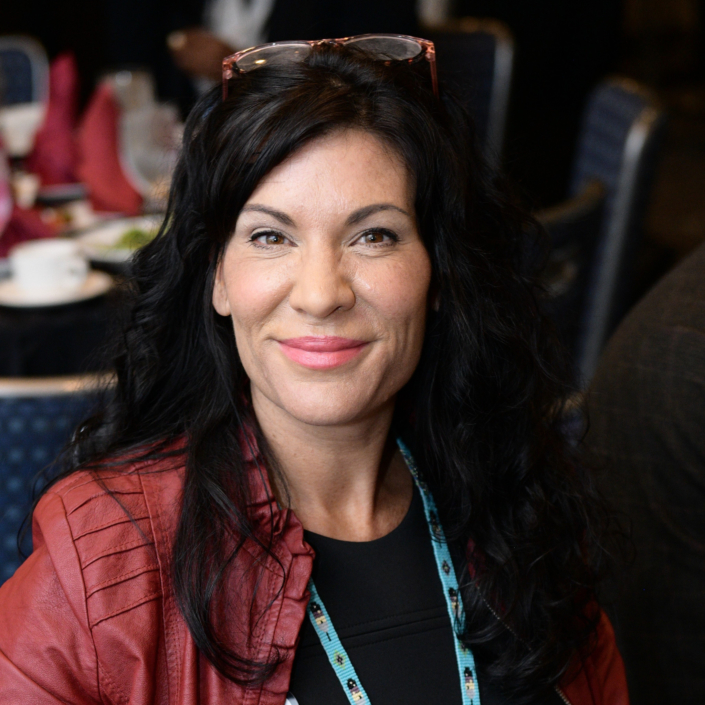New changes introduced by the Treasury’s Community Development Financial Institution (CDFI) Fund could “pose several challenges” for Native CDFIs, says Oweesta Corporation’s CEO Chrystel Cornelius. But there is also some upside, she adds.

Cornelius’ comments come on the heels of a final certification application release by the CDFI Fund last week. The application, unveiled on Dec. 7 diverged from a draft in late 2022 that threatened to shut out Native CDFIs from issuing certain types of loans that are popular in Indian Country. The final version relaxed some of the items that caused concern among many Native CDFI executives.
While there are some positive changes in the final application rules, Cornelius said, potential problems remain. Amid a busy week on the road, she shared her thoughts about the new rules and their potential impact via email with Tribal Business News.
Do you have any thoughts on the certification changes? Are they good for Native CDFIs or at least better than they were when first announced last November?
One of the key issues is that the changes could potentially limit the types of mortgage loans offered, making homeownership unattainable for some. Additionally, the requirements for employees to predominantly focus their time on financial products and services might restrict their ability to assist potential borrowers in developing essential money management skills for long-term success.
One potential change that could also cause issues for Native CDFIs in the future is the new regulations regarding board members and accountability. Under these regulations, CDFIs will no longer be able to consider board members related to staff as part of their accountability. However, they will still be required to maintain the percentage of Native board members.
Native CDFIs recognize the significance of equipping young individuals with financial skills and nurturing their potential as future business owners, entrepreneurs, and homeowners. The effectiveness of Native CDFIs in tribal communities is largely attributable to their tailored and culturally sensitive approach to overcoming the challenges faced by community members.
The removal of the option for unstructured, one-on-one conversations with potential loan clients could also impact the personal relationships staff build with borrowers, which play a crucial role in guiding them to the right products and services. Additionally, the new accountability exclusions may make it challenging for Native CDFIs in rural areas to fill vital board and staff positions or meet accountability requirements.
Are there areas where changes have been positive?
For instance, the CDFI Fund is now allowing non-certified organizations to apply for a Financial Assistance (FA) award for fiscal year (FY) 2024. There have also been changes to ease the identification process for tribal members, allowing them to self-identify as Native, thereby eliminating the need for issuing Tribal IDs or other documentation.
The CDFI Fund has also relaxed their previous restriction on staff time allocation for Development services. The new amendment now permits Native CDFIs to dedicate as much staff time as necessary to development services, while still meeting the financing entity test. Lastly, the requirement for an approved strategic plan, which posed significant challenges to emerging or smaller Native CDFIs, has been altered. Instead of a comprehensive strategic plan, a less detailed alternative, more feasible for Native CDFIs has been proposed.
What about the funding amounts for NACA? It’s an increase from fiscal 2022, but it’s really covering a 2-year period, right?
The CDFI Fund’s NACA incorporates two funding rounds, FY23 and FY24. Furthermore, the maximum sizes for Financial Assistance (FA) and Technical Assistance (TA) awards have been increased to $2 million and $400K, respectively. The Fund has also introduced a new feature allowing for the prorating of Performance Goals & Measures (PG&Ms) if the awarded amount doesn't match the funding request.
For instance, if a Native CDFI applies for $2 million and receives only $1 million, they will only be held accountable for 50% of the projections outlined in the application, as opposed to fixed PG&Ms as was the case previously. This is a positive modification and can be advantageous for Native CDFIs as they reconsider their funding strategies with the CDFI Fund over the forthcoming two years.
As the implications of these changes continue to unfold, it will be important to monitor their impact on Native CDFIs and the communities they serve.
Editor's Note: This story has been updated to clarify $400,000 as the maximum size for TA awards under the NACA program. The maximum size under the regular CDFI program is $300,000.
